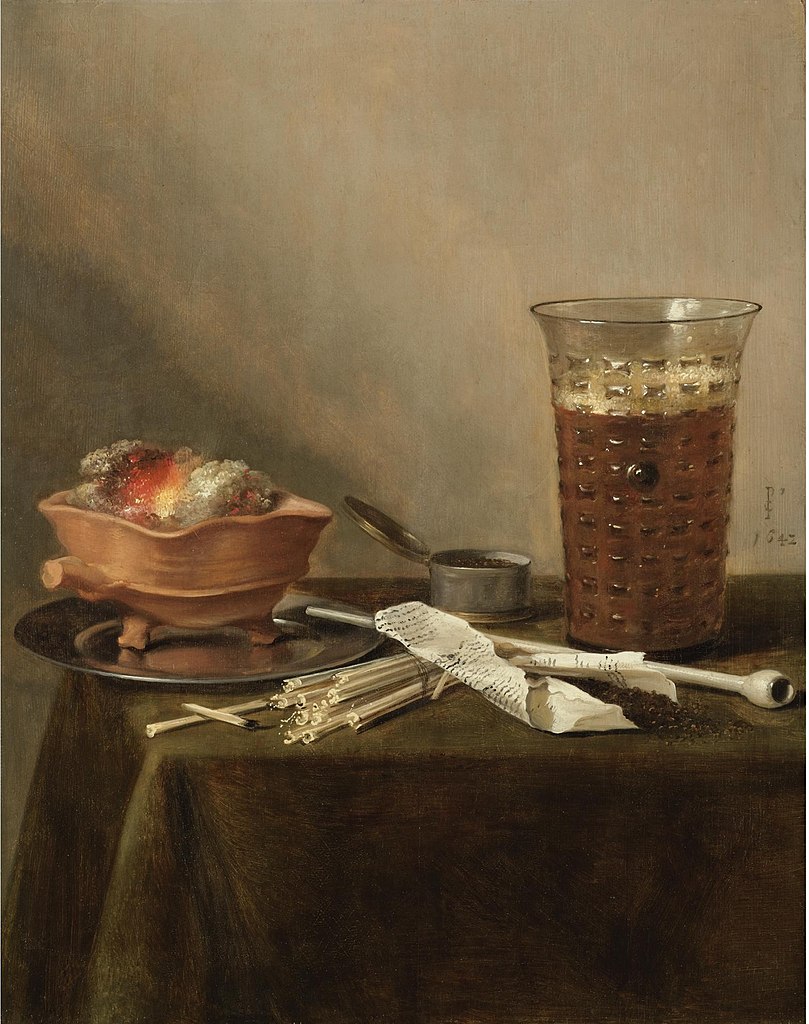
Still life with a brazier, a glass of beer, and a clay pipe by Pieter Claesz 1642, wikimedia commons
In New Netherland, beer was an essential part of life. Most people could make beer at home, often as 'small beer' that was brewed with the leftovers of stronger beer to make a weak beer that had great nutritional value. Most of these were less than 1% ABV, and because water was often not safe to drink, families, including children drank these 'small beers' regularly.
The combination of the boiling phase of the brewing process, and the final product with of a small amount of alcohol and active brewers yeast in the small beer helped to sanitize the water, and the brewer's yeast had the added benefit of ensuring enough vitamin B was included in the diet. Beer also contained much needed calories for the work necessary to survive and thrive in the 17th century.
Even the beers brewed at taverns generally had lower alcohol rates per volume, usually 3% ABV would have been considered a 'strong' or 'session' beer.
Because beer was so important to the functioning of the colony, a great deal of time was invested by the government in attempting to control the prices, charge taxes or excises, and create laws that defined who could become a 'tapster' or run a tavern, or become a brewer. Tavern maids, cooks, and enslaved Africans were all involved in the production and serving of beer.
By 1660, with approximately 340 structures in New Amsterdam, approximately 20- 25% of them were either taverns or breweries.

